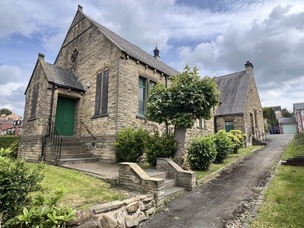A ‘DANGEROUS’ quarry which became a magnet for young swimmers is set to be drained and transformed into a nature reserve, ambitious plans shown to the Chronicle revealed this week.
Stairfoot Quarry, which is part of the sprawling former Yorkshire Brickworks plant, saw teenagers flock there when temperatures soared over recent summers.
The swimmers’ behaviour resulted in former owners, Hanson UK and Heidelberg Materials, erecting fencing around the Wombwell Lane site to increase safety and prevent access.
Signs warning youngsters of the under-surface dangers were also installed, while patrols were increased by South Yorkshire Police and Barnsley Council.
However, the Chronicle can now reveal the 29-hectare estate - which was last operational in 2003 - has been purchased by Green Earth Developments Group (GEDG), a Manchester-based firm which specialise in re-purposing of brownfield sites into environmental and community assets.
GEDG plan to develop the site in partnership with the local community, Barnsley Council and other interested parties including nearby schools, replicating the success of other reclaimed nature sites such as Rabbit Ings, Royston.
It’s anticipated that a planning application for the restoration will be submitted before the year’s end, with creation of the nature reserve happening alongside.
GEDG plans to consult widely in the local area over the autumn period ahead of any plans being submitted to Barnsley Council, bosses told the Chronicle.
Lucinda Lay, from GEDG, said: “This will serve as a biodiversity offsetting site.
“Under the stewardship of GEDG, it will be managed as a local environmental asset in perpetuity.
“This is a regionally significant asset acquisition for our growing portfolio.
“Currently, the site comprises a mosaic of largely unmanaged habitats including developed land, grassland, woodland, scrub, hedgerows, trees and waterbodies.
“The remaining mineral void requires pumping and restoring to enable the creation of the proposed nature reserve.
“Valuable habitats will be retained and enhanced with sustainable management practices.
“The 29-hectare site has a rich industrial history dating back to the 19th century.
“It comprises a series of former clay pits used for the manufacture of bricks, a number of which have been previously infilled.”
Middlemarch, the UK’s largest wildlife trust consultancy and leader in the preservation of the natural environment, conducted the initial baseline ecological and biodiversity net gain surveys.
These surveys assessed the current habitats and their condition and identified biodiversity uplift options to support the proposed nature reserve plans and national nature recovery targets.
Middlemarch has now been commissioned to produce a suite of reports that will help determine if the site is viable as both a nature reserve and a so-called habitat bank.
“There is no reason why these sites, which are constrained by previous industrial use, cannot be brought back to play important roles in reversing the UK’s biodiversity loss,” Lucinda added.
“There are opportunities to create new habitats on site to encourage invertebrates and amphibians.”






























